B2B marketplaces:
The top players – and how to build yours
The business-to-business eCommerce market is massive. Here's how to leverage its potential.
A business-to-business (B2B) marketplace connects companies for transactions. They can facilitate the selling of B2B products or services or make B2B rentals possible.
In 2021, the size of the global B2B eCommerce market was valued at $17.9 trillion. That is over five times the size of the B2C eCommerce market.
And in B2B, a lot of blue ocean remains. Much of the market is still completely undigitized – and ripe for the marketplace revolution.
This guide helps you evaluate the opportunities for B2B marketplaces, list the top successful benchmarks, and illustrates the steps to launch a B2B marketplace.
Table of contents:
A business-to-business (B2B) marketplace facilitates transactions between businesses. B2B marketplaces can operate in
- products (e.g. retail, manufacturing)
- services (e.g. real-estate, trading, hiring professionals)
- B2B rentals (e.g. equipment, office/storage/manufacturing space).
Generally, B2B marketplaces fall into two main categories: vertical and horizontal.
Vertical marketplaces specialize in specific product or service types. For example, Faire is a wholesale marketplace, Freightos does freight services. (Recommended: this podcast episode with Freightos CEO Ruthie Amaru is packed with insights on B2B marketplaces.)
Horizontal marketplaces offer diverse categories. An example is Amazon Business, a B2B eCommerce marketplace.
In contrast to peer-to-peer (P2P) and business-to-consumer (B2C) platforms, B2B marketplaces streamline very complex and large-scale business transactions. They accommodate bulk purchases and support intricate internal procurement procedures.
(Here's our article on How to build a website like Amazon.)
Unicorns like Airbnb, Etsy, and Thumbtack paved the way for the marketplace model across sectors. B2B markets have been slower to embrace this trend, but change is underway.
In 2021, the size of the global B2B eCommerce market was valued at $17.9 trillion, over 5x the size of the B2C eCommerce market. In 2019, the estimated value was $12.2 trillion, meaning an over $5 trillion increase in just two years.
According to the DigitalCommerce360 report, in the U.S., B2B marketplace sales are the fastest-growing digital commerce sales channel.
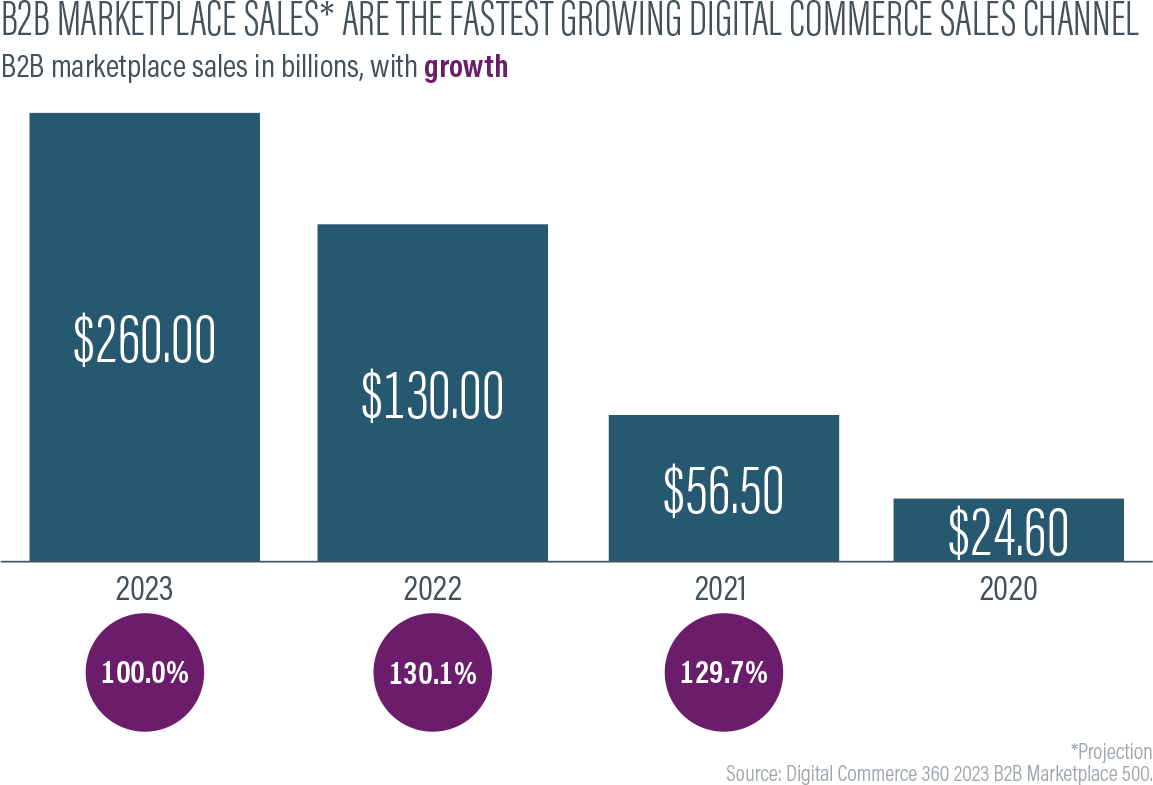
By 2025, technological research firm Gartner estimates that 80% of B2B sales interactions will occur in digital channels.
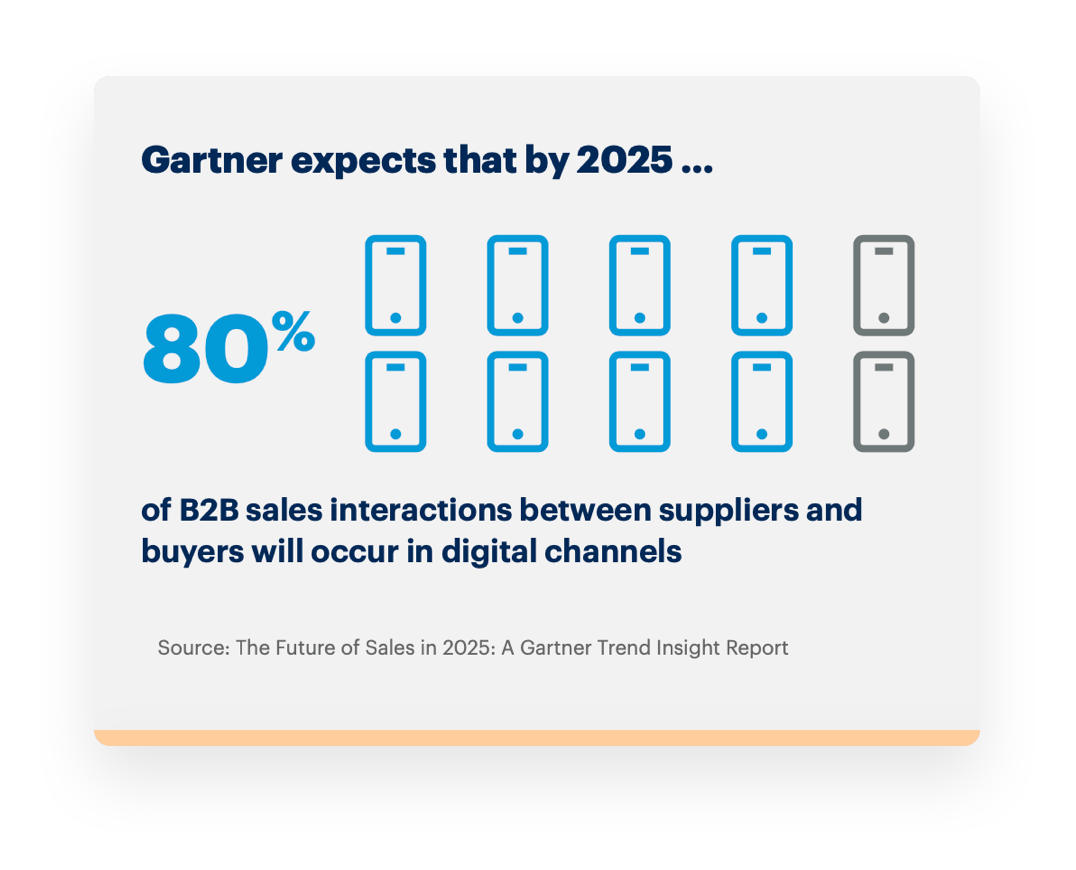
Still, there are aspects of B2B that slow down the online marketplace takeover.
Compared to B2C, marketplaces entering the B2B space face a number of industry-specific challenges and platform requirements. Especially the B2B transaction and order flows (which I’ll get into later in this article) are decidedly more complex than on B2C or P2P marketplaces.
Despite the challenges, many investors have brought up B2B as the biggest opportunity for marketplaces. Check out our interviews with Josh Breinlinger, Fabrice Grinda, Ben Narasin, James Currier, and Mathias Ockenfels for thought-provoking analyses.
What are the businesses responsible for the phenomenal growth of the B2B marketplace sector?
Let's look at two different rankings: the 5 most popular B2B marketplaces among worldwide B2B buyers (according to Statista) and newcomers and the top 5 US-based B2B marketplaces (according to Applico).
- Amazon Business
- Ebay
- Alibaba
- Global Sources
- Indiamart
Amazon business
Touting $35 billion in annualized gross sales, Amazon has become a major player also in the B2B eCommerce landscape.
The rapid growth can certainly be attributed to Amazon's prior success in the B2C space. More than 6 million customers are now purchasing on Amazon Business, including 96 of the Fortune 100 companies. Amazon Business offers features like business-specific pricing, multi-user accounts, and analytics tools to enhance the buying experience. It supports integrations with over 100 procurement, payments, and ERP systems, making it efficient to use for companies with highly distinctive procurement processes.
eBay
eBay's B2B operation focuses on offering a vast selection of products ranging from electronics to business supplies. It caters to the needs of business buyers who seek value and price transparency.
A key aspect of eBay's B2B success is its ability to help small businesses reach a global audience, facilitating their growth. eBay's non-competitive stance with its sellers –eBay has no first-party retail busienss–, unlike some other marketplaces, also strengthens its appeal among B2B sellers. This approach has led to eBay seeing significant growth in its B2B segment.
Alibaba
Alibaba’s rise in the B2B marketplace is a result of its early strategic focus on underrepresented SMBs in China. By facilitating connections to small entrepreneurs in China with no access to international markets, Alibaba rapidly consolidated its position as a market leader.
Another key building block for Alibaba was trust. In the early days of China's e-commerce ecosystem, trust was a significant issue. Alibaba addressed this by introducing the "Trust Pass" system, which rated SMBs on various factors and prioritized listings by the market’s most reliable and trusted participants.
This strategy helped establish a baseline level of trust which became essential to the platform's long-term success, which later diversification and expansion have solidified.
Global Sources
Global Sources has operated in business-to-business trade for over 50 years. It provides buyers worldwide access to new products and qualified B2B lead generation with Chinese manufacturers. It follows Alibaba as the second-largest B2B marketplace in China. The platform's success is largely attributed to its extensive experience in the industry and its ability to cater to a diverse range of business needs and sectors.
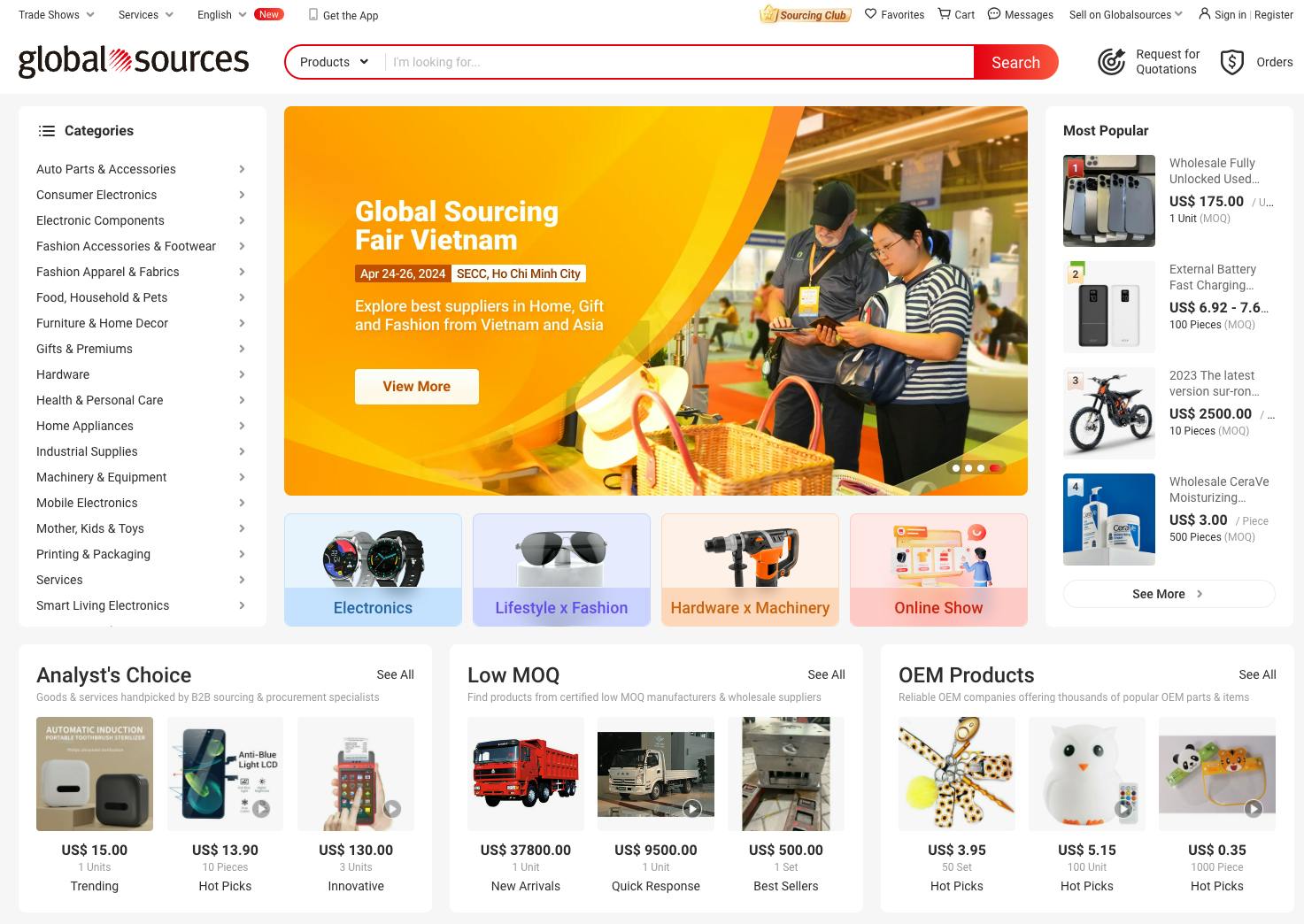
Indiamart
Indiamart is the largest B2B marketplace in India (capturing 60% of the market share) and a significant player globally.
Unlike most B2B marketplaces, the platform operates on a freemium model, offering basic services for free while charging for premium features. The paid features include business listings, buy leads, lead management, payment processing services, customer support, marketplace insights, international and domestic reach, and a mobile application.
This approach has meant rapid growth for Indiamart's SMB-dominated user base and supported its expansion to over 100 countries worldwide.
The top 5 US-based B2B marketplaces
- Faire
- Joor
- Indigo
- MaterialBank
- FBN
Faire has gained significant attention and success in the retail industry. It's a platform designed to connect independent retailers with brands and artisans worldwide.
Farie specializes in unique, often handcrafted or artisanal products. This range appeals to retailers looking to differentiate their inventory with items not commonly found in larger, mainstream retail chains or platforms. By focusing on independent and local makers, Faire helps smaller brands gain access to a broader market that they might struggle to reach on their own. It's expansion is backed by substantial venture capital funding.
JOOR
Joor is a fashion and luxury wholesale platform serving the fashion, beauty, and home industries.
Joor has been instrumental in digitizing the wholesale buying process in the fashion industry, a sector traditionally reliant on in-person interactions and paper-based processes. The platform boasts a large and diverse client base, including high-profile brands and retailers.
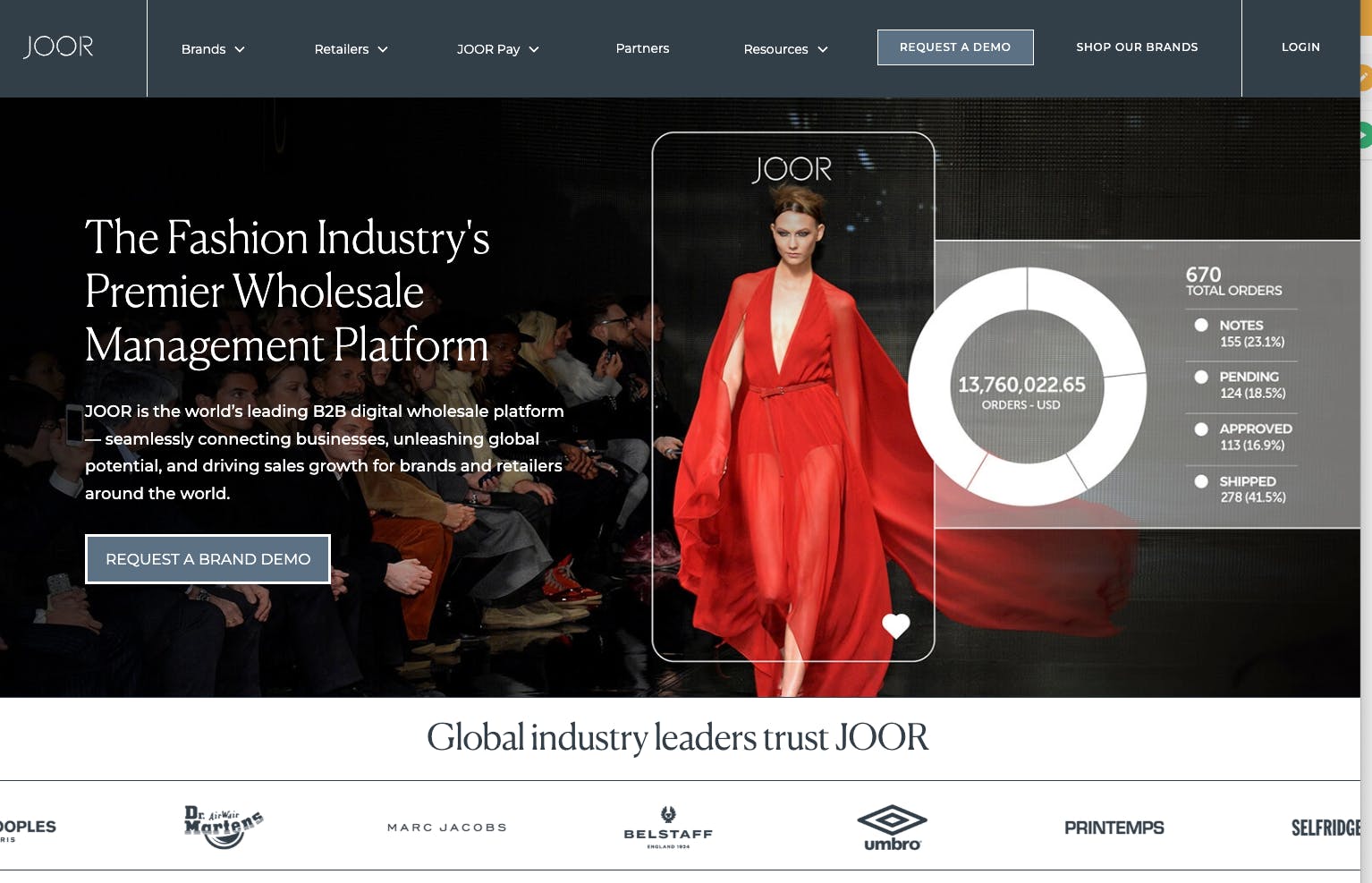
Indigo
Indigo Agriculture is a notable player in the agricultural sector. The platform connects farmers with buyers (like grain processors and food companies), facilitating the sale of crops. Indigo also engages in the carbon credit market.
Indigo places a strong emphasis on sustainable and environmentally friendly farming practices, aiming to improve crop health and productivity while reducing the environmental impact. The company offers data-driven tools and insights to farmers, helping them optimize their farming practices.
Indigo's approach of integrating technology with traditional farming has been a key factor in its success. By offering innovative solutions like microbial seed treatments and a digital marketplace, Indigo has positioned itself as a leader in agricultural innovation.
MaterialBank
Material Bank is a growing B2B marketplace focused on the architecture and design industry. It provides a platform for professionals to find and sample materials such as fabrics, tiles, wall coverings, flooring, paint, and more from a vast array of suppliers.
A key feature of Material Bank is its ability to provide material samples quickly. Design professionals can order samples and typically receive them within a very short timeframe, which is a significant advantage in the fast-paced design industry.
FBN
Farmers Business Network (FBN) collects and analyzes a vast array of agricultural data, such as seed performance, input efficacy, and pricing information to empower farmers to make data-driven decisions. A key offering is its marketplace that connects suppliers of agricultural inputs like seeds, chemicals, and fertilizers directly with farmers.
As a network, FBN facilitates a community of farmers where they can share knowledge, experiences, and best practices. This peer-to-peer interaction is a valuable resource for many farmers.
The size of the B2B eCommerce market alone presents a business opportunity.
Especially from the perspective of a marketplace entrepreneur or a business looking to expand its offering with a marketplace platform.

Marketplaces thrive in markets with high single transaction value or high transaction frequency, exemplified by B2C and C2C unicorns like Airbnb and Uber.
Surprisingly though, a study on the top 100 marketplaces by the VC firm Andreessen Horowitz reveals that successful marketplaces can operate with various combinations. Many B2C marketplaces have thrived even in low-value, low-frequency markets.
There is one category, however, that the authors of the study label “The Holy Grail”. That is the space with both high purchase frequency and high average order value.
This combination is difficult to find.
But B2B marketplace platforms have tremendous potential to fall into this category. Services like freight, equipment, or machinery rentals or buying large quantities of goods are often high-value transactions that happen regularly. The opportunity for a commission-based marketplace business model is evident.
In the consumer realm, nearly any demand can be satisfied through a simple click.
But in the B2B landscape,high-value, high-frequency transactions often still rely on pen and paper, phone, and fax.
These practices persist for valid reasons: high stakes and the resulting high need for trust, price negotiations, certificate exchanges, and complex purchase chains that involve multiple parties and locations.
Still, these complicated processes can produce significant inefficiencies. Marketplaces can help overcome them.
If a marketplace is able to solve the underlying requirements – trust, oversight, administrative requirements – while streamlining the steps, it can improve productivity in each step of the B2B purchase process.
The possibility to offer efficiency and convenience to the individuals responsible for these transactions can make marketplaces remarkably sticky and resistant to disintermediation.
Marketplaces are great for aggregating products or services. Especially in fragmented B2B markets with numerous small suppliers lacking online presence.
These markets often rely on personal contacts or intermediaries like brokers and agencies. Building a marketplace in a market with high fragmentation could make finding a B2B provider infinitely easier. And bring transparency and efficiency to the transactions.
A marketplace can offer a streamlined alternative to the middlemen or work with them to increase efficiency for all parties involved.
As a result of the B2C marketplace revolution, private consumers are very accustomed to solving problems through eCommerce and online marketplace platforms. We’re familiar with standard marketplace procedures, marketplace payments, and trust-building elements like reviews and identity verification.
The change of habits in B2C spills over to B2B. As individuals grow accustomed to marketplaces in their personal lives, they also find it easier to embrace online platforms when making business purchases.
The barrier to adopting new technologies is lower today than in the early marketplace era.
Another clear difference between B2C and B2B: most new customer-facing marketplaces must take on existing competitors and innovate on product to compete. B2B marketplace platforms still have unexplored market space – blue ocean.
Finding a blue ocean means the founding team can focus on solving the chicken-and-egg problem and achieving liquidity without battling an incumbent.
As a result, they gain the upper hand in building network effects and defensibility over time.
Introducing a marketplace component lets business engage their audience in new ways.
This approach minimizes the financial risks associated with traditional business expansion. Third-party suppliers bring their own capabilities, marketing, and customer networks, easing the original business's investment burden.
A marketplace can also provide a new avenue to build relationships with customers and increase loyalty. An ecosystem of third-party suppliers can serve a wide variety of customer needs and quickly adapt to new developments in the market.
I recommend this talk by James Currier at the latest Marketplace Conference, where he discusses why the 2020s are a great time to build a B2B marketplace and gives away 24 tactics to make an online B2B marketplace work.
Marketplaces – whether B2B, B2C, or P2P – are challenging businesses to start.
For one, marketplaces are more trust-sensitive than traditional eCommerce. Transactions and payment processing are more complex between three parties (buyer, seller, platform) than just two. User acquisition, user retention, and liquidity-building strategies are complicated because often marketplace customers and suppliers are two distinct user groups with different needs.
In B2B, many of these challenges are intensified. Let’s look at two core challenges: transactions and trust.
B2B transactions are notably more intricate than their B2C and C2C counterparts. They encompass extended sales cycles with stages from requesting a proposal to negotiation and contract signing.
This process often necessitates certifications, verifications, and NDA agreements. Supplier practices, like working with cost estimates, clash with customer expectations for precise tracking and billing.
Organizations can also have unique payment, billing, and credit requirements.
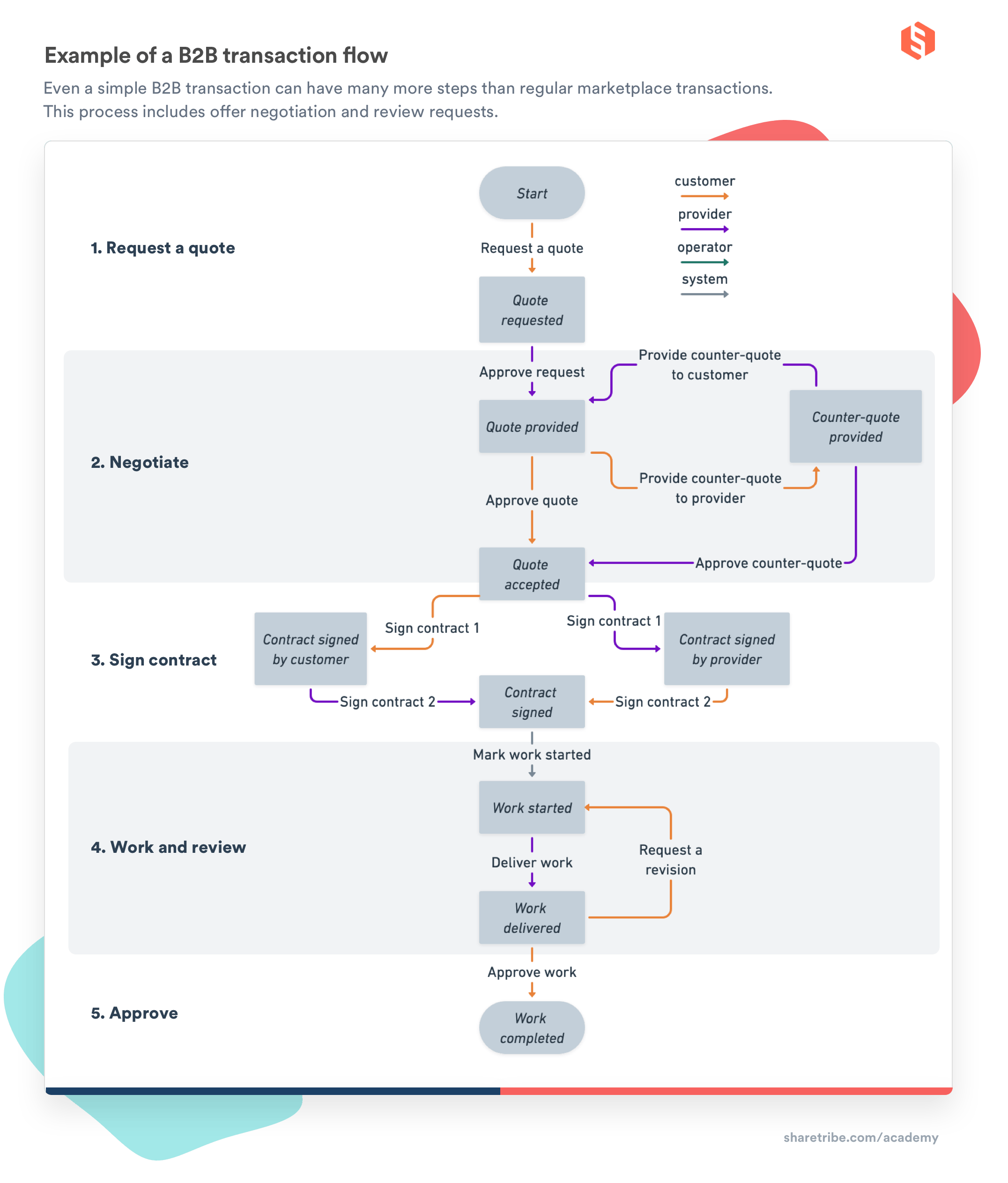
The complexity of B2B transactions creates a two-fold challenge for early-stage marketplace entrepreneurs.
First, you must understand all the stages in the transaction flow and the reasoning behind them, which requires empathy and domain expertise.
Second, you must bring these complex transactions to an online platform and perfect the UX demands with sophisticated technology and exceptional product management.
Facilitating payments is a core value proposition for any marketplace platform. In B2B, where a marketplace can offer a smooth, convenient process to replace countless steps of back and forth, this is especially important.
Done right, seamless payment processing alone can significantly increase the stickiness of a marketplace.
Owning the transaction is a profitable strategy, as commissions can be charged from customers and suppliers. The commission-based business model creates no additional costs for either party before they strike a deal, decreasing the barrier of entry.
For B2B businesses, in particular, subscription-based revenue models are also relatively common, mainly if the offering includes powerful SaaS tools for one or both sides of the marketplace.
The transaction process defines all the possible interactions between a customer and a provider in your marketplace:
- Do customers reach out to suppliers, or vice versa?
- Is there a pre-booking step, or do the parties begin with negotiation?
- Are verification, certificates, contracts, and/or NDAs requested?
- How and when does payment happen?
To support this complexity, a customizable transaction engine is vital for seizing B2B opportunities.
Technologically, this requires an integration between a robust backend transaction engine, user-friendly UX, and possibly a payment service provider. Regulatory compliance for online payments and data protection is essential.
The transaction process unlocks marketplace potential but poses technical challenges. At Sharetribe, we help founders solve these challenges. Our marketplace software offers a powerful, fully customizable transaction engine that lets developers build and modify complex transaction flows easily.
High-quality supply is vital in any marketplace. Freightos CEO Ruthie Amaru talks about this in a Two-sided podcast episode, as does Kevin Lustig, founder of Scientist.org.
On a B2B marketplace platform, ensuring quality supply involves manual efforts such as supplier vetting, onboarding, and removing subpar players, especially in industries with strict standards.
Supply curation includes supporting matching supply and demand. Some marketplaces adopt a white-glove approach to assist demand in defining requirements and connecting with the most suitable suppliers. Creating a set of standard operating procedures and educating both sides of the marketplace may also help.
Platform technology plays a key role in this process:
- How do users connect on the platform?
- What's the search experience like?
- Can parties message before transacting?
- What certification is required and when?
These UX choices significantly impact users' understanding of the platform's value. Tailoring the user experience is essential, even during the MVP stage.
B2B transactions carry substantial financial risk for individuals and their organizations.
While large transaction value presents opportunities, it also demands trust in the supplier and the platform. A failed purchase can disrupt projects, strain relationships, and create challenges for teams.
In B2B, trust is built over years of established relationships and networks. Moving these relationships online requires marketplace entrepreneurs to invest in long-term trust-building strategies.
To truly replace processes founded on individual relationships, a marketplace has to make a strategic commitment to trust-building activities from day one.
Consumer marketplaces have several tactics for generating and strengthening trust between users. These are covered in-depth in this article on marketplace trust. Some of the best practices apply to B2B, too: informative listings and company profiles, two-sided reviews, reliable payments, quality guarantees, and insurance. Stellar customer service, transparent pricing, and partnerships with established brands also signal reliability.
Depending on the market, B2B marketplaces may need identity verification, certificates, billable hour tracking, etc. Listen to our Two-sided podcast episode with Ruthie Amaru for more B2B-specific trust-building strategies.
Offering a seamless transaction process is a potent value proposition, especially in B2B, which offers lots of opportunities for adding even more value for users.
A great strategy for building an initial audience is starting with a single-player mode where the marketplace first focuses on offering great tools for one side – most often the supply – for managing their business. Create a centralized solution for availability management, pricing, billing, shipping or inventory management, taxation, marketing, customer relationship management, or the like.
The demand side and transactions can be introduced to the platform later.
CreXi founder Michael DeGiorgio elaborates on this in episode five of our marketplace podcast, "Embrace, don't replace, the middleman". The value-adding functionality GreXi has created is very specific to the commercial real estate industry. Expertise in the domain and an understanding of the underlying motivations help when identifying the biggest pain points in your market.
Single-player mode demands significant tech investment but yields higher retention, customer lifetime value, and reduced platform leakage.
In this article, I've covered the B2B marketplace requirements, opportunities, and challenges based on a decade of experience working with marketplace founders, experts, and investors. To delve deeper, read our 10-step createa a marketplace guide or watch our 10-step video guide.
When launching a marketplace, start with a Minimum Viable Platform (MVP) that addresses the core issues of your key users.
Building a B2B marketplace from scratch offers flexibility in platform design but comes with substantial upfront costs and time demands. Hiring developers or agencies can cost over $50,000, excluding ongoing expenses like third-party tools, maintenance, updates, hosting, and monitoring.
If you have in-house development skills and are open to handling maintenance, the costs can be reduced to hosting and third-party tools.
However, consider your time as a founder or project owner; it might be wiser to focus on unique features and growth rather than coding basic functions already common in most marketplaces.
Creating an MVP using a no-code marketplace builder can expedite your launch. But B2B marketplace requirements often surpass what no-code tools offer.
While manual workarounds can fill initial gaps, especially with a small user base, a white-glove approach involving hands-on assistance to suppliers and demand-side users can complement no-code solutions for your MVP.
A SaaS marketplace tool is a convenient starting point for validating business concepts. They enable rapid site deployment and audience learning without the need to employ a development team.
Sharetribe's no-code marketplace builder supports this journey and facilitates a seamless transition to custom functionality after idea validation. Read on to learn more about Sharetribe's custom development opportunities.
API-based marketplace solutions, pioneered by Sharetribe, merge the advantages of custom development and no-code tools. They are designed to tackle exactly the kinds of technical challenges B2B marketplaces face.
Sharetribe offers the core marketplace features without coding, reducing development time and costs by up to 90% compared to building from scratch. This enables fast development since you can focus on the unique features that distinguish your platform from others.
Sharetribe handles maintenance, security compliance, updates, and routine tasks, freeing you to focus on other aspects of running your business. API-based development demands more technical skills and time than fully no-code solutions, but the control and flexibility it offers make it a great choice for building a B2B marketplace.
Sharetribe is a headless, API-based marketplace solution with robust no-code functionality designed to bring the benefits of custom development to marketplace SaaS. It helps you launch a B2B marketplace platform quickly and cost-efficiently while giving you complete control over your transaction process, user experience, and additional features.
Build the optimal order flow
Sharetribe provides a powerful transaction process editor for tailoring your B2B order flow.
- Build negotiation flows.
- Introduce complex pricing logic.
- Support delayed payments or invoicing.
- Require verifications.
- Integrate digital signatures.
- Store custom data during the process.
- And a more.
Customizing the default transaction process is straightforward, and third-party integrations and custom features are possible. Sharetribe's transaction engine streamlines pre-launch development but also facilitates further development as you learn more about user needs.
Build custom features and integrate third-party apps
With Sharetribe's APIs, your marketplace is infinitely extensible. The Integration API, event architecture, and Single Sign-On via OpenID make it simple to integrate Sharetribe with your existing software systems. Add multiple payment systems, custom-develop features, integrate third-party tools to address client needs, and transform your platform into a SaaS-enabled B2B marketplace.
Create a unique look and feel
With Sharetribe, you have complete control over your marketplace's user experience. Customize Sharetribe Web Template for web or mobile and launch a new platform fast, or integrate marketplace features into your existing software through Sharetribe's APIs.
Manage through the Admin Console
Sharetribe’s powerful admin functionality keeps every aspect of your marketplace under your strict control. Monitor and manage the quality of supply, ensure transactions flow smoothly, and store user data securely.
Save 90% of build time and cost
Sharetribe’s powerful backend gives you all the essential features of a B2B marketplace. You can set up your MVP without any coding. On top of this out-of-the-box functionality, you’re free to custom-develop functionality that your specific B2B audience needs. You’ll save months of development time and get to focus your resources on features that make your marketplace the uniquely perfect fit for your users’ requirements.
Worry-free, scalable infrastructure
Grow your marketplace without worrying about traffic spikes, data security, or compliance. Sharetribe hosts and maintains your marketplace backend and ensures its performance at any scale.
The global Sharetribe Expert Network is here to help you
Sharetribe works with vetted agencies and freelancers from around the world. We’re happy to connect you with an experienced Sharetribe developer to help build your marketplace. Find a Verified Expert, and check out our guide on hiring a marketplace developer and describing your marketplace's requirements.
Examples of B2B marketplaces built with Sharetribe
Sharetribe has helped thousands of marketplace founders launch businesses worldwide. Here are examples of B2B marketplaces built with Sharetribe.
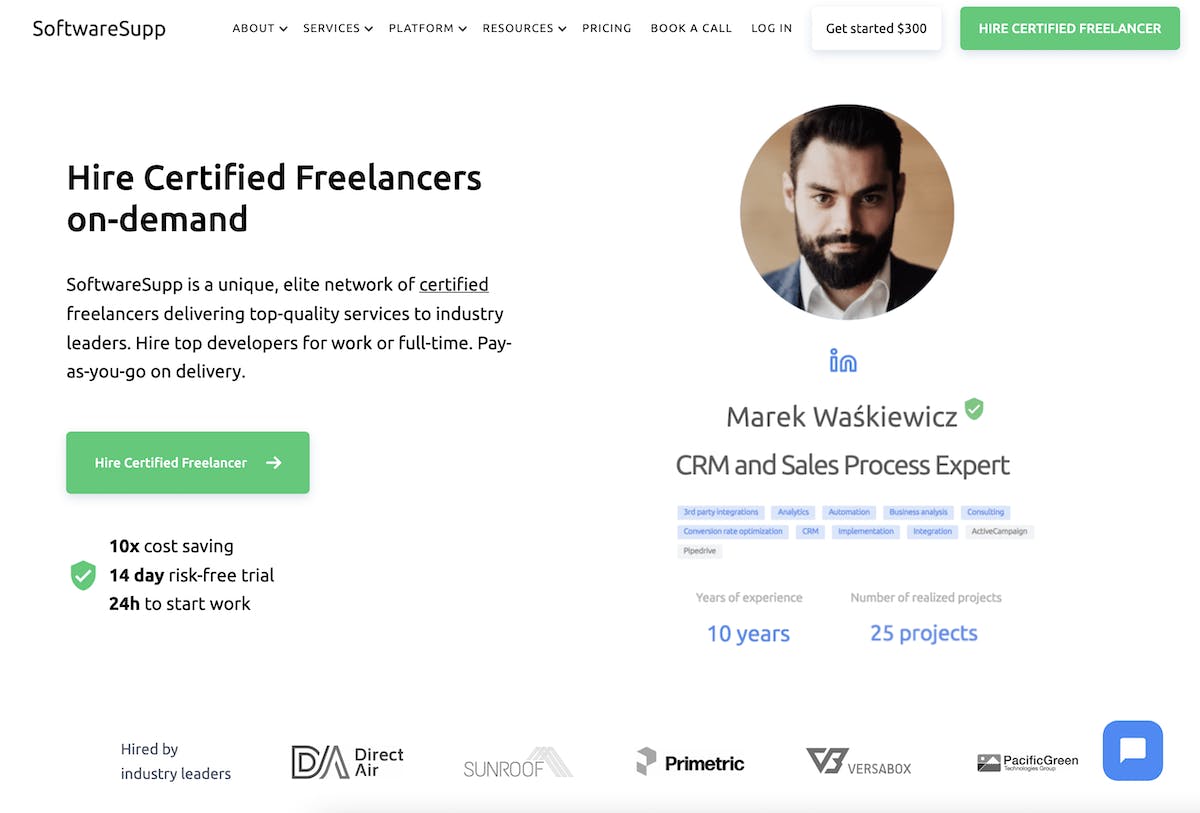
SoftwareSupp
SoftwareSupp helps companies hire and manage projects with verified tech experts.
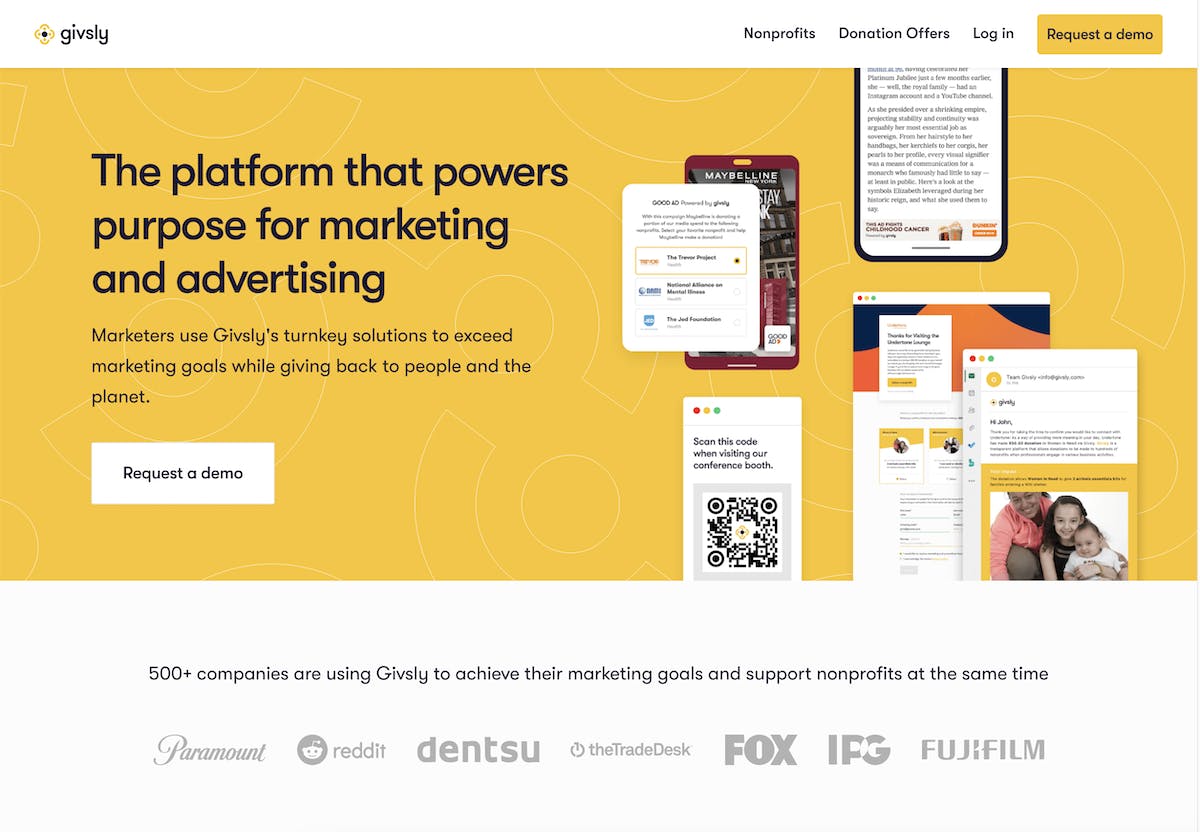
Givsly
Givsly connects businesses and non-profits and drives better business results by giving back to communities.
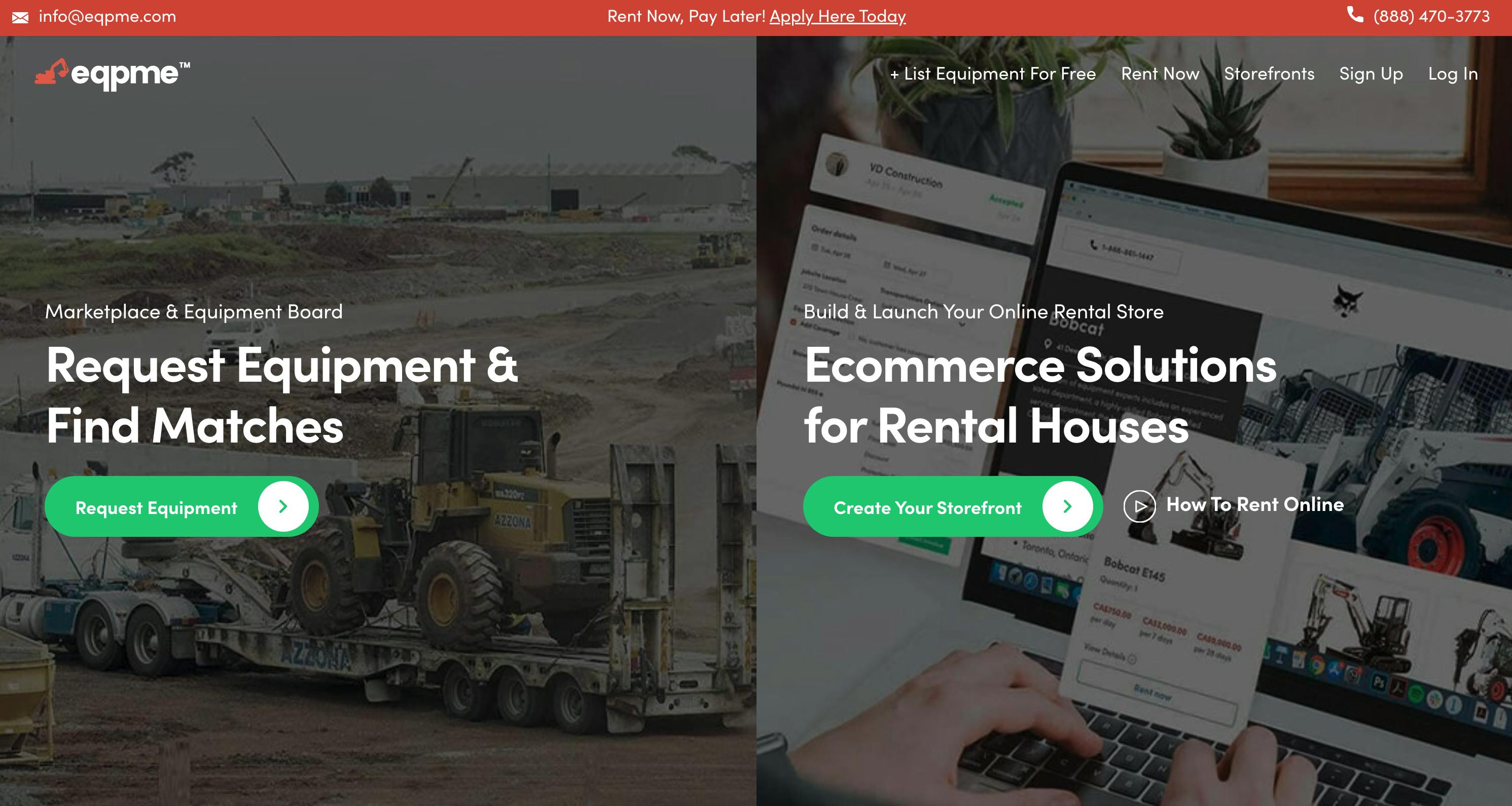
Equipme
Equipme is the most trusted eCommerce & rental marketplace for construction equipment.
Start your 14-day free trial
Create a marketplace today!
- Launch quickly, without coding
- Extend infinitely
- Scale to any size
No credit card required
